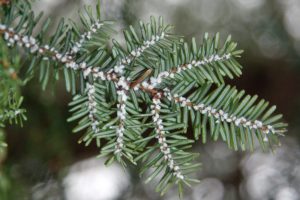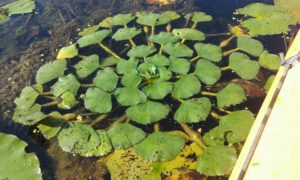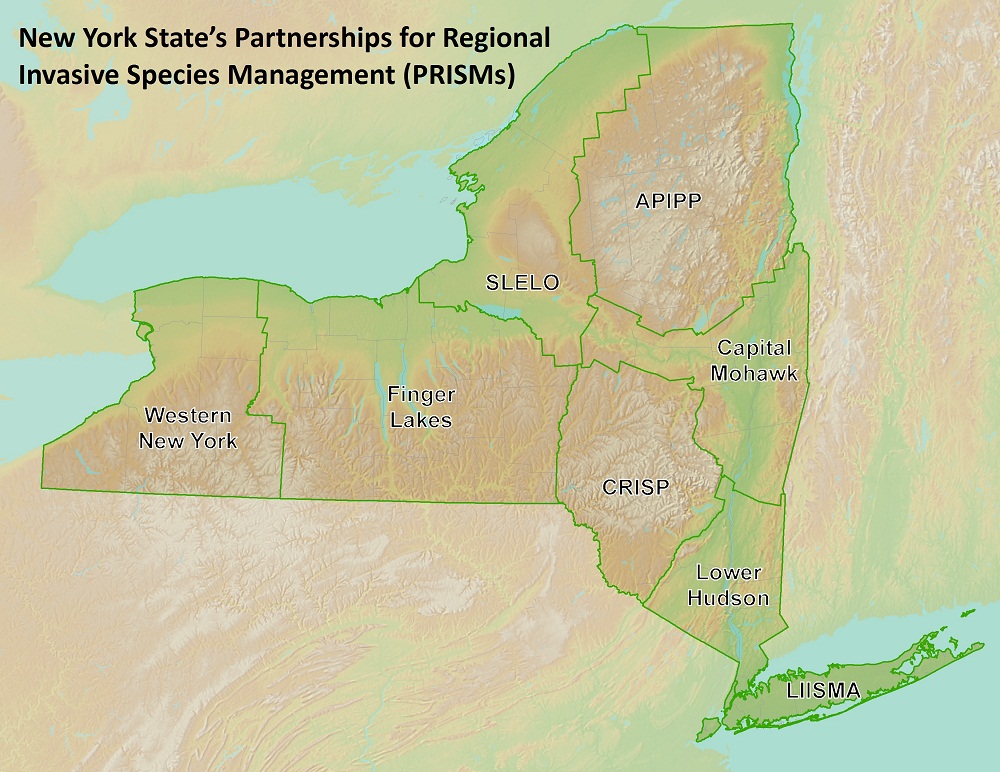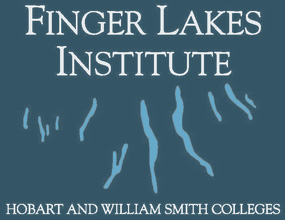Volunteer Opportunities
We are actively looking for volunteers to help the fight against invasive species and we want you to be a part of it! You’ll help us by serving as additional ‘eyes on the ground’, identifying target species in our region. Without your help these invaders might go undetected. Plus, early detection allows for rapid response of high priority invasive species that cause significant damage to native ecosystems.
We don’t just want you to help us, we want to help you, too! In these programs, you’ll learn more about the environment around you with the help of professionals! Get a close look at what plants are growing beneath the surface of the water, or along your favorite hiking trail.
Where does this take place?
Anywhere in the FLX!
Who can join?
Anyone!
Details for each program area below.
Terrestrial Survey (Trail Survey Program)
As part of our Trail Survey, participants are asked to hike local trails and record what invasive species they see with a mobile app. By taking part in our Trail Survey, you not only help the environment by helping us track invasive species, but you give yourself a chance to learn new skills!
Trail Survey Goals:
- Find where invasive plants are growing along our trails by surveying with your smartphone
- Use the collected data to prioritize invasive species removal

What would I be doing?
Volunteers will be hiking trails of their choice five times during the months of August, September, and October (you can start at any point during any of these months). While hiking, you will note the invasive species you find using an app on your phone called ArcGIS Survey 123. This year, we are asking volunteers to look for twelve different invasive species in the Finger Lakes region. For your ease, we have provided a virtual training video, training slides, and species fact sheets below to get you started! Review these materials to be ready to go out on the trail; it’s quick and easy!
We are also offering certificates to our volunteers to thank you for your time this season. More information is provided below:
Trail Tracker Certificate: Earn our Trail Tracker Certificate when you complete three surveys this season!
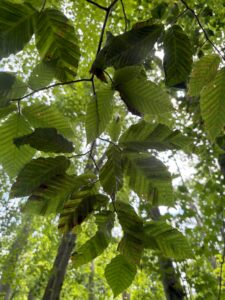
Beech leaf disease (sign of invasive nematode) on American beech
Trail Master Certificate: Earn our Trail Master Certificate when you complete five surveys this season!
How to Join:
- Register Here
- Watch our training video and review the provided materials
- Download ArcGIS Survey 123 and download our survey onto your device: TSP_Survey123_Downloading_Steps
- Hit the trail!
Benefits to joining the Trail Survey:
- Help the environment by stopping our worst invasive species!
- Learn new skills! Learn how to identify invasive species and use reporting tools on your phone
- Be more active! By getting outside and hiking on trails, you can exercise without having to go to the gym
- Get outdoors! Research shows that we spend 93% of our time indoors, and that being outside and interacting with nature can significantly help lower stress
2025 Training Materials:
- Trail Survey Training Video
- Finger Lakes PRISM Trail Survey Training Slides
- Trail Survey Fact Sheets 2025
For more information reach out to Laurel Williams, Invasive Species Education and Outreach Program Manager, at lwilliams@hws.edu.
Hemlock Woolly Adelgid Survey
Hemlocks are under threat! We are seeking dedicated volunteers to join us in the fight against one of our most destructive (and smallest) invasive species, the Hemlock Woolly Adelgid (HWA). This tiny insect is wreaking havoc on eastern hemlocks, the Finger Lakes region’s most valuable tree species.
As a volunteer, you can help us fight HWA by surveying on your own around trails and parks in your area, or by attending one of our in-person workshops. With a greater understanding of HWA’s distribution, we can better plan efforts to limit its spread and treat it before its too late!
-
Presentations – An overview and discussion of HWA, hemlocks, and how to participate in the survey program if interested.
-
Workshops – A hands-on field session to learn how to survey for HWA and identify hemlocks, led by our team.
-
Virtual Trainings – Learn over Zoom how to survey for HWA and identify hemlocks on your own time.
Email lwilliams@hws.edu for more information.
Aquatic Survey (Macrophyte Survey Program)
The Macrophyte Survey Program provides community scientists with the information and supplies needed to sample for invasive aquatic plant species in waterbodies near them. Participants attend a training prior to the start of the program to learn how to identify aquatic plants and report findings using a phone or tablet. We provide identification guides that cover a wide range of species but we focus on three high-priority invasive species: Hydrilla, Starry Stonewort, and Water Chestnut. The program runs annually from June to October, and volunteers are encouraged to commit to a schedule that works best for them; though sampling on a bi-weekly basis is ideal!
Curious about what the sampling process entails? It’s easier than you think! The video linked below shows what the rake toss method of sampling entails—this is the same procedure volunteers will perform (though perhaps from a dock, a pontoon, paddleboat, or kayak). You simply throw the sampling rake into the water, and identify what plants and other organisms are attached when you pull it back up.
www.youtube.com/watch?v=Dc8ZX_C96qI
The MSP has seen a lot of growth since its launch in 2017! During the 2023 season, we had 52 volunteers sampling on over 30 different waterbodies. Learn more about the program and how to join our dedicated team of volunteers by emailing Education and Outreach Program Manager Laurel Williams at lwilliams@hws.edu.
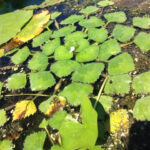 |
 |
 |
|
Water Chestnut (Trapa natans) |
Hydrilla (Hydrilla verticillata) |
Starry Stonewort (Nitellopsis obtusa) |
Water Chestnut Pulls
Water chestnut (Trapa natans) is a high priority aquatic invasive species in the Finger Lakes and we’re looking for passionate people to help us control it! Water chestnut can be removed by hand and is a great outdoor activity that helps protect the environment.
In 2022 season, we pulled over 13,000 pounds of water chestnut at 14 locations across the Finger Lakes region; and in 2023, we removed 7,500 pounds pounds of plant material. This was made possible with the help of all the dedicated volunteers and partners that joined us throughout our field seasons.
Currently, water chestnut hand pull events are planned through the end of June and the month of July, before the plants mature and begin to reseed. In general, each pull starts around 9 am and lasts roughly 3 hours. Kayaks or canoes are freely provided for all volunteers, based on registration.
Email AIS Program Manager Catherine Farrell at cfarrell@hws.edu for more information on the upcoming season.
